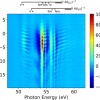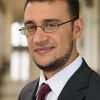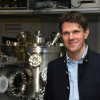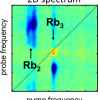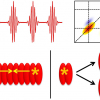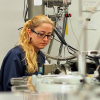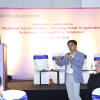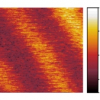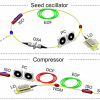Laser Spectroscopy News
Scientists from the Max Born Institute for Nonlinear Optics and Short Pulse Spectroscopy have carried out the first attosecond transient absorption spectroscopy (ATAS) experiment on a polyatomic molecule.
EU grant worth EUR 2 million for the development of a new approach in optical spectroscopy of the superheavy elements.
Matthias Kling is to head a new research group in Ultrafast X-Ray Imaging and Spectroscopy in the Laboratory for Attosecond Physics at the Max Planck Institute of Quantum Optics.
A research team from the University of Freiburg’s Institute of Physics has succeeded for the first time in applying 2D-spectroscopy to isolated molecular systems and thus in tracing the interactive processes at a molecular level more precisely.
Machine learning techniques using a combination of the layer clustering and decision tree methods aids prediction of spectra.
Generally, only the behaviour of a single excitation and its consequences are investigated in 2D spectroscopy, but new techniques are being developed using two excitations.
Applications for this prestigious award are invited by 30 November 2018.
Combining metasurface lenses with MEMS technology could add high-speed scanning and enhance focusing capability of optical systems.
Many chemical processes run so fast that they are only roughly understood. To clarify these processes, a team from the Technical University of Munich (TUM) has now developed a pump-probe spectroscopy methodology with a resolution of quintillionths of a second. The new technology has the potential to help better understand processes like photosynthesis and develop faster computer chips.
Lomonosov Moscow State University scientists have invented a new way of doing time-resolved spectroscopy without ultra-fast lasers.
Scientists from the Max Planck Institute of Quantum Optics, using high precision laser spectroscopy of atomic hydrogen, have confirmed the surprisingly small value of the proton radius determined from muonic hydrogen.
A new method, using deep-ultraviolet continuum pulses, has been developed to efficiently measure electron transfer in dye-sensitised, transition-metal oxide photovoltaics.
A cooperation between Messe München India and the Indian Pharma Machinery Manufacturers Association (IPMMA) will collocate events jointly representing 600+ global and Indian companies.
Professor Andrew Orr-Ewing, known for his work on ultrafast laser spectroscopy, has been elected as Fellow of the Royal Society.
High-resolution laser ionisation of radioactive atoms in a supersonic gas jet has been used to probe the properties of heavy elements.
A new microscope based on ultrafast pump–probe spectroscopy and scanning near-field optical microscopy offers the potential for studying dyanmic processes on the nm scale.
Graphene Flagship researchers have developed an optical fibre laser that emits pulses with durations equivalent to just a few wavelengths of the light used. This fastest ever device based on graphene will be ideal for use in ultrafast spectroscopy, and in surgical lasers that avoid heat damage to living tissue.

